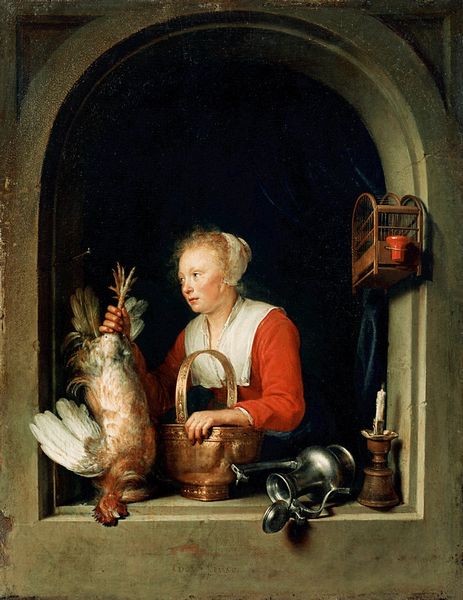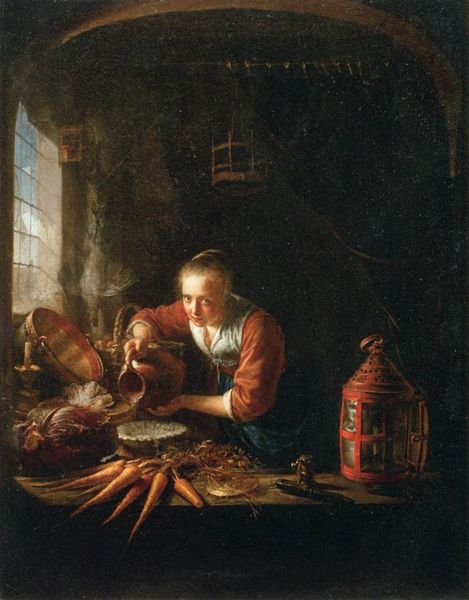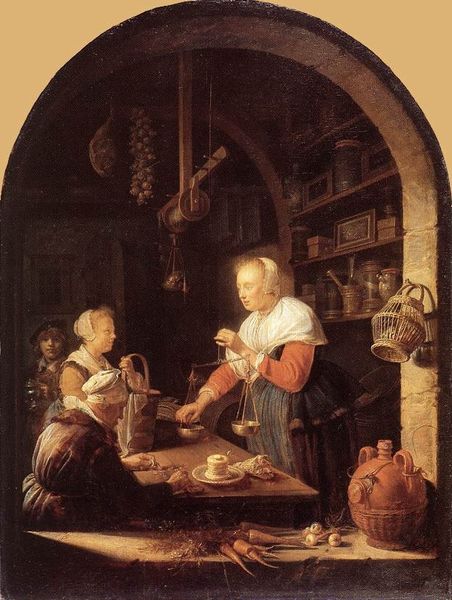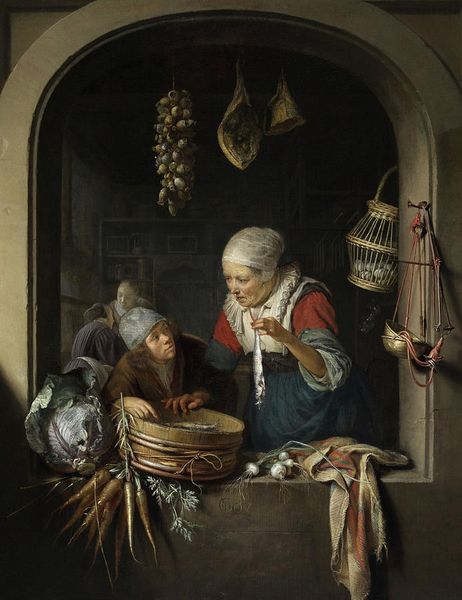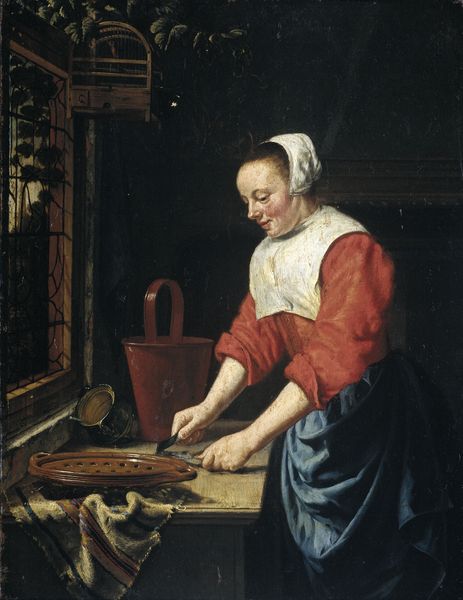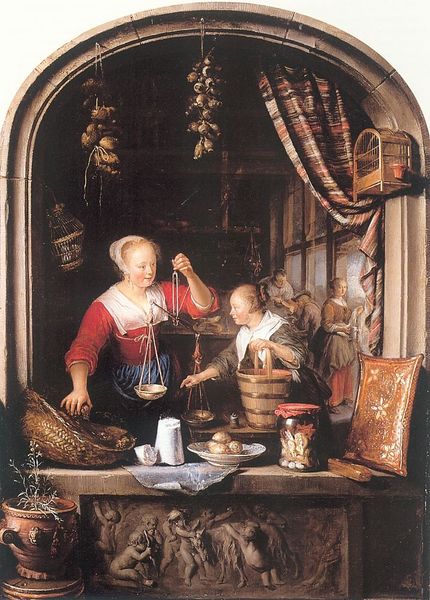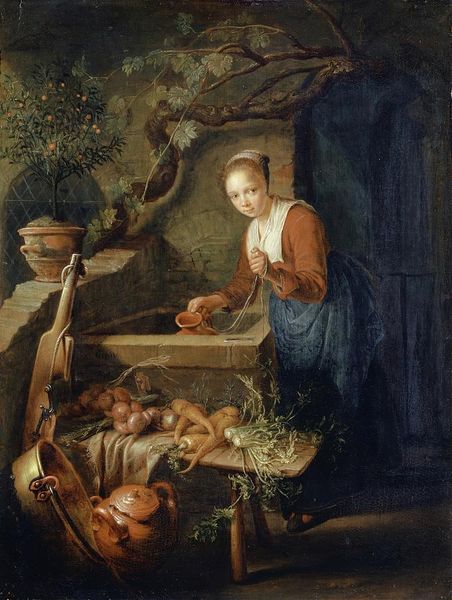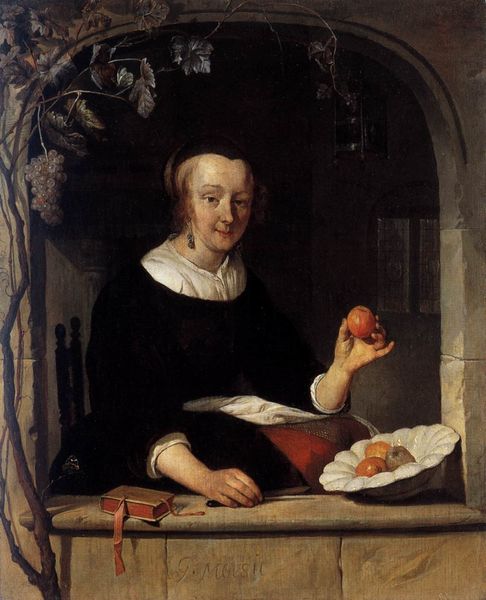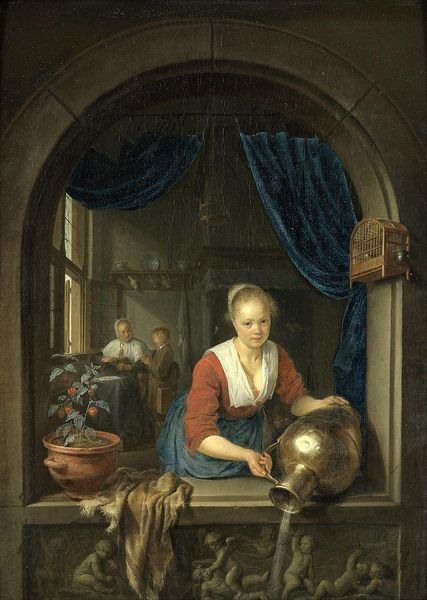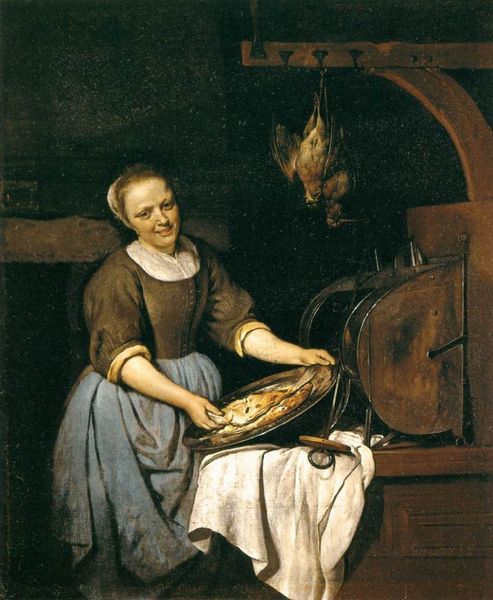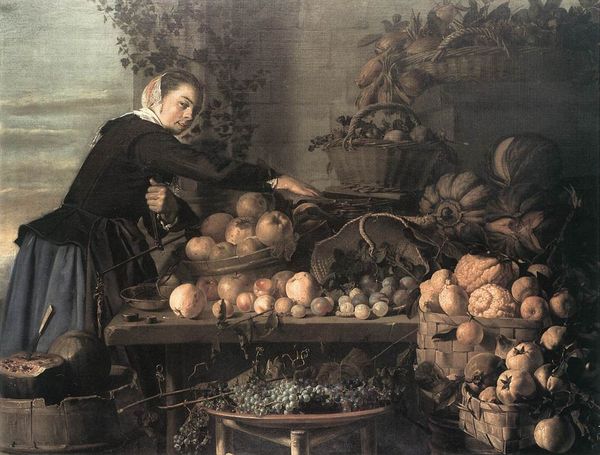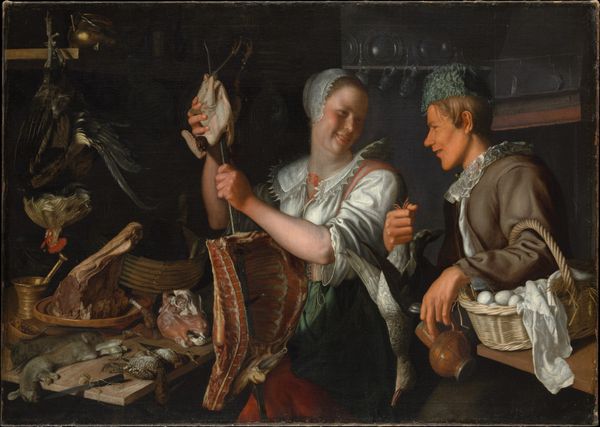
painting, oil-paint
#
portrait
#
baroque
#
dutch-golden-age
#
painting
#
oil-paint
#
landscape
#
genre-painting
Dimensions: 57.2 x 43.3 cm
Copyright: Public domain
Curator: This genre painting, "Woman Peeling Carrot," attributed to Gerrit Dou, immediately gives off an intimate, domestic feeling. There's a stillness, a quiet focus in the woman's face. Editor: It’s the materials that capture me first. Look at the gleaming surfaces! The textures rendered are astonishing. The light reflecting off the copper pot and the sheen on the carrots tell us a lot about Dou's skill, and perhaps the status of his patrons. Curator: Absolutely. It speaks volumes about the cultural significance of the domestic sphere in the Dutch Golden Age, a time when concepts of home and family were being increasingly valorized even within broader structures of unequal opportunity for women. We have this single woman in the center. I can imagine what gendered labor dynamics could be in play. Editor: Indeed. Her work is positioned against the backdrop of an arched window with food placed on a sill. Considering Dou’s meticulous style, it’s safe to say the carrots and game hanging alongside represent the availability and consumption of goods and services. This attention to detail emphasizes his work process, too. His dedication involved precise handling and layering of his materials, suggesting a slower more methodical practice. Curator: It also reflects societal anxieties, perhaps unintentionally. Dutch society at the time, as it continues to this day, was wrestling with trade policies, environmental change, consumer practices and, crucially, its global colonial imprint and the labor systems it relied on. A seemingly benign genre scene could carry layered, possibly conflicting messages about gender roles and material consumption. Editor: True, but beyond the wider socio-political, the materiality remains. Consider Dou's use of oil paints: the blending and glazing techniques used were incredibly laborious but create such photorealism, further glorifying these materials and her labour within the domestic setting. And what kind of access did his studio assistants have? How did they contribute to the ultimate vision? Curator: It makes me consider the power dynamics in the 17th century, between artists, patrons, and, of course, the often-unacknowledged contributions of women to domestic sustenance and daily life, particularly how their work upholds colonial systems. Editor: Examining this “Woman Peeling Carrot,” then, invites us to peel back our assumptions too! Curator: Right, understanding it needs more than just aesthetic appreciation or a survey of art-making processes! There are more and bigger stories about this seemingly simple image, stories about its role in broader global dynamics and what this one particular view left out.
Comments
No comments
Be the first to comment and join the conversation on the ultimate creative platform.
